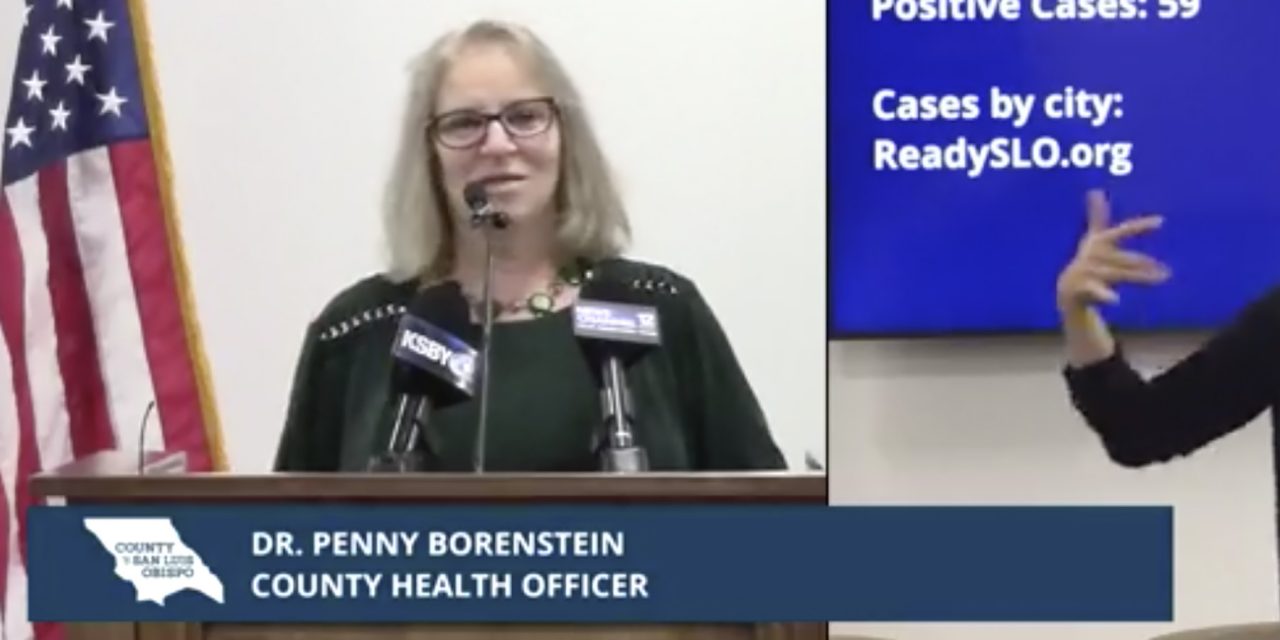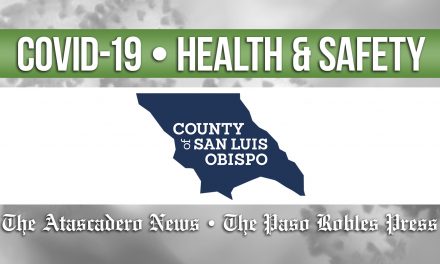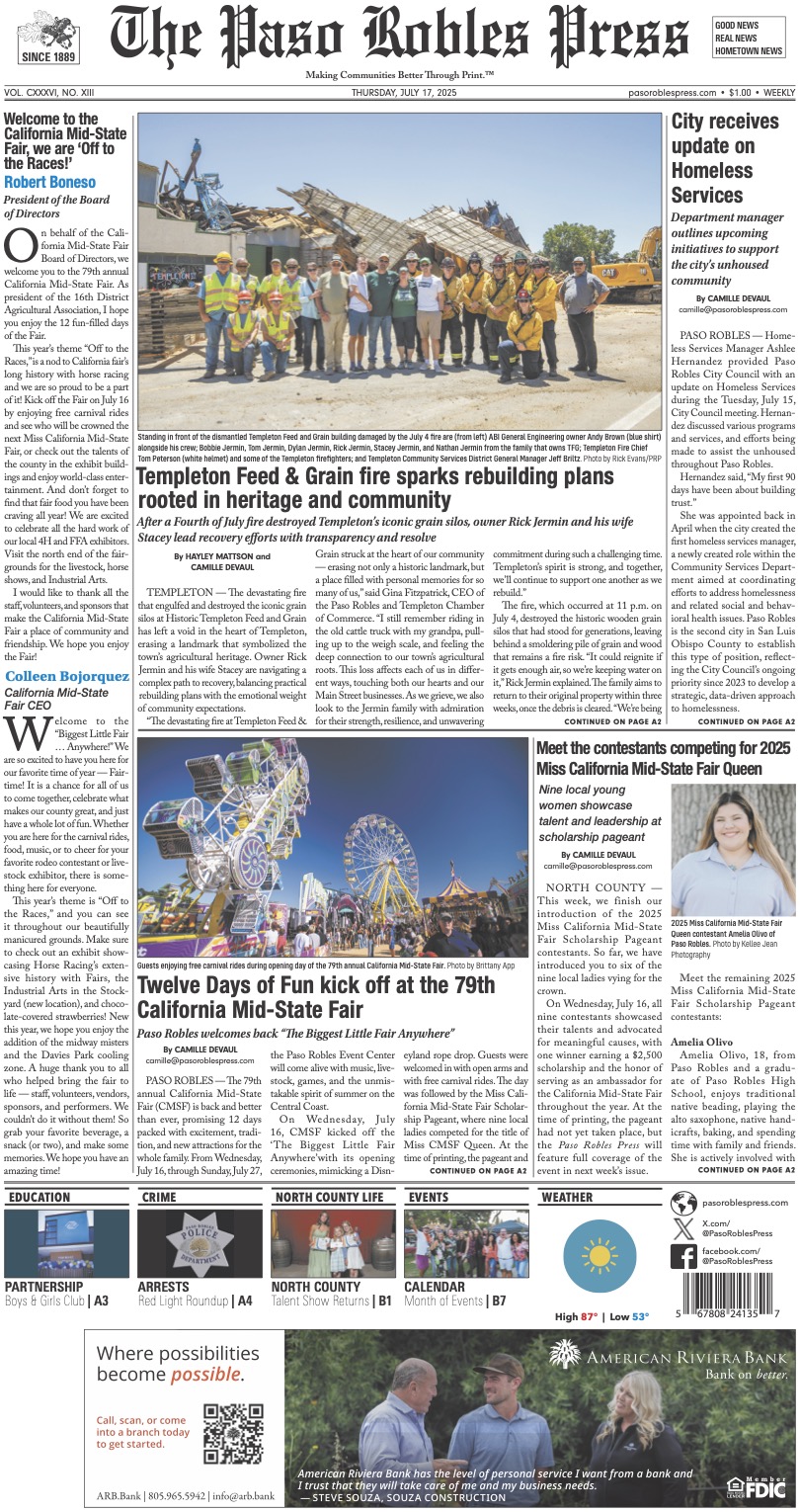As the weather warms, and we head toward May, there is a natural tendency to veer toward public gatherings and venturing outdoors. The financial anxiety that the business community is facing is also causing a level of concern for livelihoods and investments by local friends and neighbors.
The initial response to the novel coronavirus landing on our shores was swift and the community took strong action to adapt to the danger. With the danger subsiding, and weather inviting, the risk of moving too quickly toward the light at the end of the tunnel presents a community threat for a North SLO County that included the highest number of cases per capita of any region in the county. The progress toward an open and engaging community will be a slow and steady gait.
The accomplishment of flattening the curve in SLO County was a combination of factors, not the least of which was the effort to shelter-at-home.
“I want to take this opportunity to congratulate the community for all the diligent efforts taken up to this point,” County Health Officer Penny Borenstein said during Friday’s public briefing. “Many of the counties around us are not as fortunate, and we are in a good position and we want to make sure not to squander that opportunity.”
Questions loom regarding what life will be like post-COVID, and most of the data and information suggests it will be indefinitely changed. Each step along the way provides a better glimpse into the future, and for SLO County, accomplishing a milestone of flattening the curve within four weeks of a shelter-at-home order is a dramatic victory. But only one of many that remain between here and the next normal.
“We have achieved this milestone in flattening the curve,” Borenstein said, “and we want to bring the community along to the next milestone of loosening the restrictions. We are prepared to do that, but we need everyone to understand this will not be a light switch, where we go back to where we were in January.”
The victory over the curve is step one of a multiphase plan to recover. County officials warned that the same recommendations that were in effect yesterday remain in effect today, and the near future.
“For the time being, we are going to continue on our course of social distancing, wearing masks when needed, staying home when sick, hunkering down at home as we have done. However, we are moving into a new phase. We can be very proud of this county,” Borenstein said, “that we have done everything we have done to arrive at this moment. But everything could change if we do not keep our resolve.”
The previous shelter-at-home order expired today, and the County issued another 30-day order to fill its place. The SLO County order is a protection against sweeping state orders, and provides the local jurisdiction the opportunity to make decisions based on local needs and circumstances.
“Let me address this head on,” Borenstein said. “We have put this order in place at a time that we are still under a state order, so that we can have local control over the content of that order and local interpretation. We intend to lift that order as soon as we can and replace it with something that is far less restrictive. We can do that at any time.”
The new shelter-at-home order has a built-in two-week review, and the local jurisdiction has the authority to amend the order as needed or as opportunity and circumstances avail themselves. The order can be adjusted in both directions — tighter restrictions or looser restrictions — and local officials have assured county residents that the move toward looser restrictions is the slow and steady goal.
Meeting Immediate Needs and Maintaining Resolve
As the federal government releases much-needed funding to a few applicants that qualified and were lucky enough to be approved, and stimulus checks are deposited from the IRS, the pressure is mounting on the elected officials, county administrators, and local leaders to define an orderly direction for next steps.
Meanwhile, basic needs continue to run scarce and supply chains working overtime to deliver necessities and essentials.
County supervisors Bruce Gibson and Lynn Compton joined together on a subcommittee of the SLO County Board of Supervisor to craft a plan to begin a phased reopening of the county. Gibson spoke at the Friday public briefing on the topic of reopening, as well as the present challenges of feeding those in need.
“We are going to develop practical guidelines to help our community stay healthy and work to recover economically,” Gibson said.
Guidelines nationwide, and as announced by California Governor Gavin Newsom on Tuesday, address the basic health crises by the numbers, in both in terms of COVID-19 numbers and healthcare resources.
“It will be placed only when Governor Newsom give us the authority to do so,” Gibson said. “This plan will be based on science and data. It will be a framework for decision-making that takes care of our public’s health. There is a lot of work ahead in the next couple weeks.”
Gibson turned his attention to the local need to feed the hungry — those who were financially or nutritionally insecure before COVID-19, and those who are facing new financial or nutritional insecurities.
“Many in our community are struggling to put food on the table,” Gibson said, “struggling to provide the most basic necessities. The County has partnered with the SLO Food Bank to stand up a program that has made over 2,600 food deliveries so far, to those most at-risk in our community. By the end of today, we will have provided 559 more.”
The generosity of San Luis Obispo County business and individuals has been a benefit to local organizations that distribute goods and services to vulnerable and at-risk communities.
“We are getting a surge of donations from local businesses and individuals,” Gibson said. “I wanted to take off from there and ask you if you are able, to make a donation to the SLO Food Bank. They would love to get cash, because a cash donation can be multiplied four times as they go out and purchase food on the open market. They respectfully and gently prefer cash donations, because food donations are not as effective, because they don’t take advantage of that leveraging they can accomplish.”
To donate time, cash or supplies, contact your local food bank or favorite nonprofit organization to find out how you can help.















